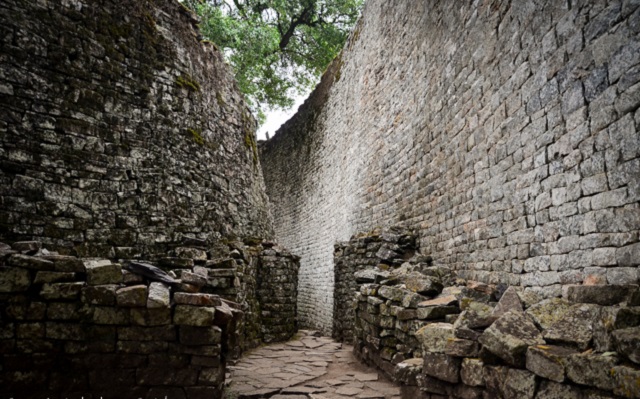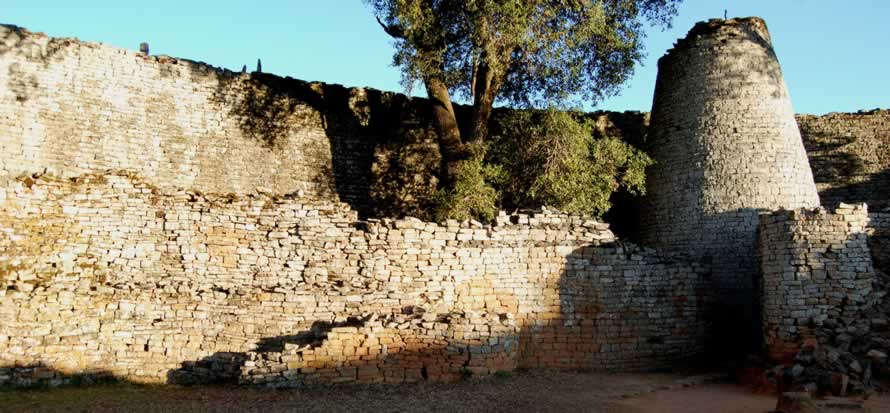
The Sunday News

Phathisani Nyathi
FOR one interested in understanding the ways of ancient Africans, it is imperative to get into their minds rather than into their shoes, for they did not possess the latter. Rather, they were equipped with their minds which informed what they created and translated into material items, including the built environment.
One would be engaging in scholarly injustice if not arrogance if one sought to understand the African past by applying modern paradigms and thought. Nothing of the ancient time will make sense. Everything encountered will be judged as superstitious or just nonsense. If superstition constitutes the African past, a researcher either has to tackle that superstition head on or he leaves it alone and directs effort elsewhere.
We are still pondering the choice of location of Great Zimbabwe. Could the choice have been influenced by the desire to fulfil the same theme gleaned from the heavens? Could there be some link between this theme-reflected-on-site and the overarching art-expressed theme on the cultural edifice? What we may be certain about is that the choice was a conscious effort on the part of the mind or minds at work.
Our challenge is trying to read the ancient minds. At the geomorphological plane, comprising the river and hills, it may be difficult but not impossible to allow our minds to engage and read the ancient African minds.
Let us complete the thought process we began in the last article and complement it with the river metaphor and see what emerges. Hills are not the norm in terms of geomorphology of Planet Earth. A look at the Njelele Hill in the Matobo Hills will paint a more vivid picture. When we allow our minds to submit to ancient African minds, we begin to see a womb, itself not quite the same as the rest of a woman’s body. Earth itself is perceived as female and females do get pregnant sometimes. In fact, there has been some suggestion that the choice of Njelele Hill, as a rain shrine, was motivated and inspired by certain critical physical attributes: roundedness (read pregnancy), presence of a cave (cavity symbolising the inside of a womb) and water (symbolising the amniotic fluid) within that cave. A student working elsewhere in the northern part of Zimbabwe established the need for a tree to be growing within the cave (Ranger 1999).
In combination, these physical-biological attributes attest to the idea of pregnancy and thus to fertility which captures the concept of continuity, endlessness and perpetuity. It is all about symbolic manipulation. The idea of femininity in a special condition (one of pregnancy) is complemented by human femininity where the women amawosana/manyusa are female with the potential to replicate the Njelele Hill through its symbolised condition.
Women possess the biological capacity to become pregnant at some point, a condition that men cannot ever possess. It thus should be appreciated that the choice of women as persons who are spiritual adepts was not fortuitous. It was a conscious effort.
The idea of pregnancy as symbolising continuity of the human species is very important and when we begin to interrogate the Great Zimbabwe cultural edifice we shall certainly be seized with isolating and pinning it down.
Complementarities of metaphors serve to reinforce a given thematic idea. If hills symbolise pregnancy and the cultural edifice has a womb of its own, there is thus identifiable complementarities. If this were to be the case, we could argue that the heavenly theme has been embraced at the level of location of Great Zimbabwe.
What would then remain would be to identify the same symbolised theme at the cultural level, which is to say at the level of the mental creation concretised. For that, we have to wait till we begin investigation of the cultural edifice.
Africa possessed a knowledge of biology and anatomy and how humans possessed the capacity to replicate themselves and, in the process, ensure continuity and endlessness of the human species.
Africa knew very well that females could not become pregnant in the absence of action of the male element. In nature, male and female elements either existed in the same organism as is the case in some trees and plants or these disparate elements were found in separate organisms.
This happens to be the case with regard to animals and some plants and trees. What this boils down to is that, as obtains in nature, the male-female elements must be found within the created world.
There cannot be male or female elements in the absence of the other. Are we going to find this at Great Zimbabwe? If the Conical Tower symbolises the phallus for example, then we expect, within the same cultural created world to find the opposite and complementary female element. Could it be the female element that has double and parallel walls? For now let’s wait.
Let us turn to the nearby river and see whether it fits into the picture that we have painted. In the opening article for this series we quoted from one of our books. If the hill constitutes the female element there just has to be a male opposite and complementary element in the vicinity.
Relying on the image that we painted in the opening article it can be surmised that the nearby river, embraced in eternal erotic embrace with mother earth and deep inside her, can only be the male element. Once this opposite and complementary elements has been identified, our picture, a fertility metaphor is complete at least at the level of location of Great Zimbabwe. Some may begin to argue that the river was just a source of drinking water for humans and their livestock, assuming there were people who lived there and were pastoralists.
Symbolic objects have two aspects to them. They have, in one hand, their literal or material existence and, on the other, they have a metaphorical or figurative aspect. The two are not mutually exclusive.
The physical river provided drinking water and yet the physical component of the river symbolised the phallus and the water flowing within the cylindrical phallus (river) assumes the symbol of semen which the phallus deposits into the female body. African nonsense? This is what we mean when we say we must be able to get into the minds of ancient Africans.
If our own modern minds fail to be accommodated by the minds we seek to get into, then the African built environment will be difficult, if not impossible to decipher. Within the African mind is embedded the Rosetta Stone which unlocks the created African world. The created world that we are describing is a world couched in African aesthetic expression.
We are going to be guided by the art as expressed at Great Zimbabwe and avoid weird pontifications that lead to futile arguments largely bordering on wars of authorship for the great monument. Our thrust steers clear of issues pertaining to authorship and thus coveted and jealously guarded heritage ownership.
We seek to listen to oracular messages of art whose voice transcends authorship and endures long after the builders abandoned the created edifice. The voice endures and resides in art for as long as the cultural edifice subsists.
(Image of the Conical Tower, note the missing top part, removed by Carl Mauch which betrays its otherwise definitive identity)




